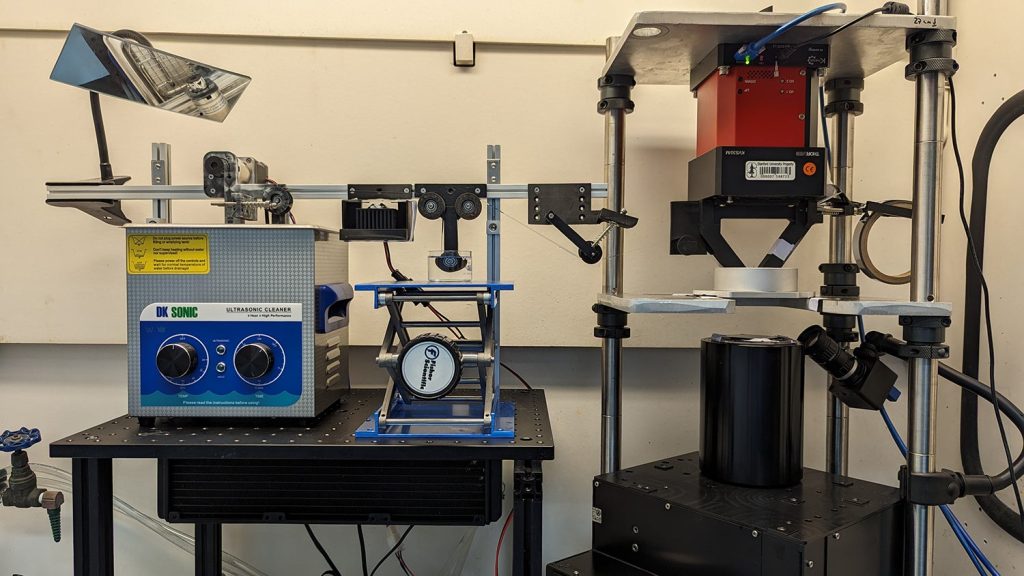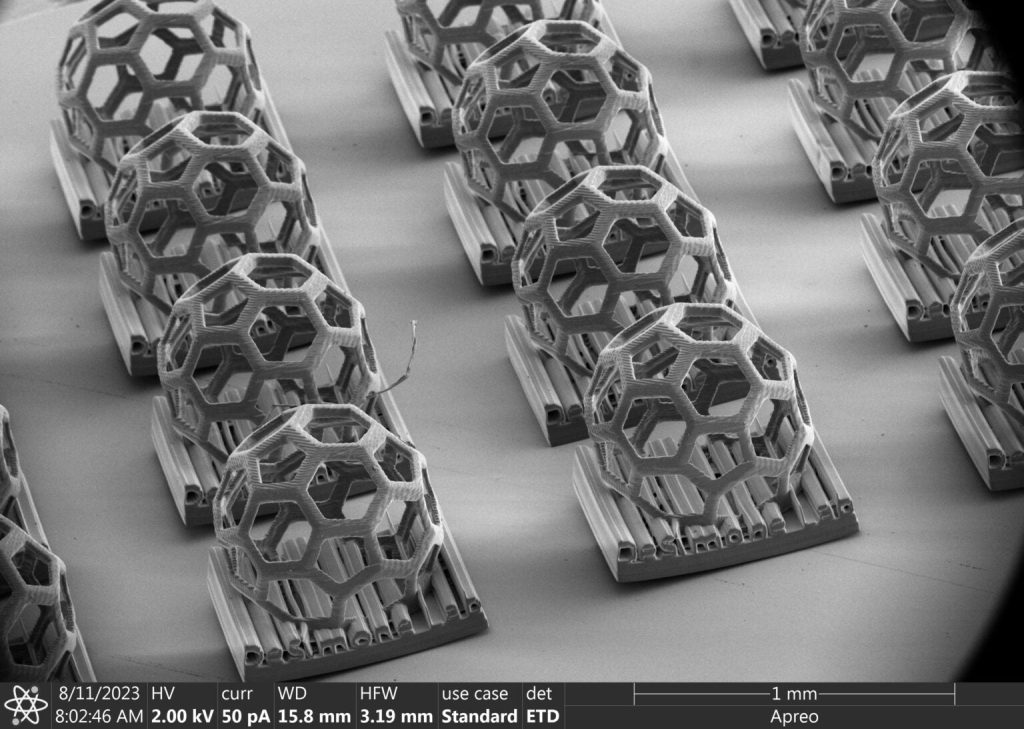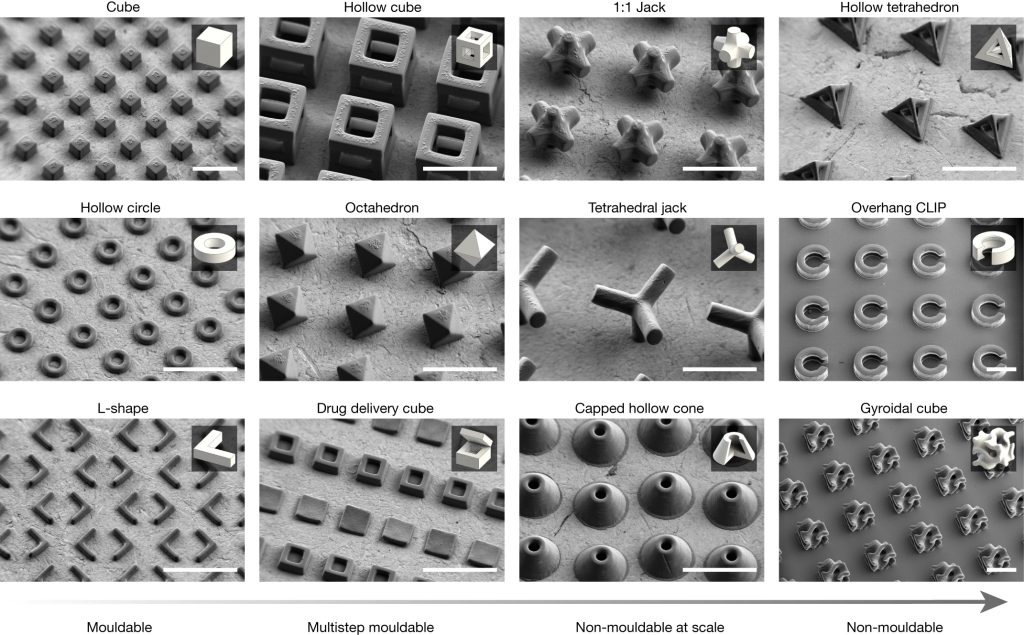Researchers from Stanford University have developed a novel high-speed 3D printing process that can produce up to one million, highly complex microscale particles per day.
While the 3D printing of microscopic models is a growing area within various industries, such as drug delivery, microelectronics, and microfluidics, a number of challenges have limited the scale of production. The need to precisely control the delivery of light, stage movement and resin properties often results in trade-offs between speed, geometric control, uniformity, and material properties.
To overcome these challenges, the Stanford team leveraged a resin-based 3D printing technique called continuous liquid interface production, or CLIP. The researchers integrated this process into a production-line setup to create a new technique, dubbed roll-to-roll CLIP (r2rCLIP).
This enabled batches of micro-scale models to be 3D printed, washed, cured and removed automatically without the need for manual input, greatly increasing production speeds. This approach is said to enable high-volume 3D printing of intricate microscopic designs, offering notable potential for biomedical, analytical and advanced materials applications.
“We can now create much more complex shapes down to the microscopic scale, at speeds that have not been shown for particle fabrication previously, and out of a wide range of materials,” explained Jason Kronenfeld, a PhD candidate in the DeSimone lab at Stanford University.
The findings, titled ‘Roll-to-roll, high-resolution 3D printing of shape-specific particles,’ have been published in the academic journal Nature.

Scaling micro-3D printing to mass production
CLIP 3D printing was co-developed by Joseph DeSimone, Sanjiv Sam Gambhir Professor in Translational Medicine at Stanford Medicine, who patented the technology through his firm Carbon in 2015.
The photopolymerization process employs UV light to quickly cure resin into a desired shape. Rather than curing the resin layer by layer, as with DLP and SLA technology, CLIP employs a continuous 3D printing process that significantly reduces fabrication time.
The key to this technique is an oxygen-permeable window, which creates a thin polymerization-free area in the resin at the bottom of the vat. This ‘dead zone’ prevents liquid resin from curing and sticking to the projection window, allowing for faster 3D printing speeds and the production of more fragile green parts.
To develop their new high-volume micro-3D printing process, the Stanford team replaced a CLIP 3D printer’s static build plate with a continuous and modular ‘roll-to-roll’ film alternative.
The aluminum-coated polyethylene terephthalate (PET) film is first tensioned and fed through the CLIP 3D printer. Here, hundreds of microscopic shapes are simultaneously fabricated onto the film. The PET film assembly line then moves the 3D printed shapes to different stations which automatically wash, cure, and remove them. Finally, the empty film can be rolled back up.

The 3D printer is capable of fabricating particles up to 200 µm in size and at feature resolutions of 2.0µm. To demonstrate the ability of r2rCLIP to 3D print dimensionally complex structures, the researchers produced a range of shapes with increasing levels of geometric complexity. One such design was a three-dimensional representation of the DeSimone lab logo, which featured a micron-scale buckyball geometry.
In conventional micro-3D printing, batches of particles must be manually processed, which can be slow and laborious. However, as a fully automated process, r2rCLIP can successfully 3D print up to one million particles in a single day.
Thanks to this high throughput, it is believed that r2rCLIP could be used for the mass production of components ranging from microrobots and cargo delivery systems, to drug delivery vessels. Indeed, the Stanford team has already experimented with 3D printing both hard and soft particles made of ceramics and hydrogels.
“Our approach is distinctively capable of producing high-resolution outputs while preserving the fabrication pace required to meet the particle production volumes that experts consider essential for various applications,” stated Kronenfeld.
Looking to the future, the Stanford researchers hope that r2rCLIP 3D printing will be more widely adopted by other researchers, industries, and high-value mass-production applications.

Scaling resin 3D printing to mass production
While this research seeks to scale the production of microscale particles, the potential of resin 3D printing for the mass production of larger-scale parts including machine parts, fixtures, dentures, and hearing aids is also being explored.
Back in 2019, scientists at the University of Michigan developed a high-speed resin 3D printing process 100 times faster than commercially available technologies. Said to rival the CLIP approach, the method employs a dual light source of UV and blue light.
By using a resin mixture that contains both photo initiators and inhibitors, the lights can be tuned to start and stop the curing process as required. This approach can achieve a similar ‘dead zone’ effect as with CLIP, but without the need for a physical window.
The University of Michigan team successfully used this approach to achieve 3D print speeds of approximately 2 m/hour. As a result, the researchers stated that this method could offer value for companies looking to use additive manufacturing in mass production.
Elsewhere, Israeli start-up Sprybuild recently unveiled its new Stereolithography (SLA) 3D printer featuring a continuous build process on a conveyor belt, which could offer potential in mass production applications. Utilizing a magnetic mechanism, the conveyor belt achieves surface stability while enabling the automatic release of 3D printed parts, reducing downtime and boosting productivity.
During testing, the system successfully 3D printed dental models at a speed of 55 mm/min. However, Sprybuild claims that the 3D printer can reach speeds of up to 150 mm/min, 2.5 times faster than the average commercial resin 3D printer.
One company that has already leveraged resin-based additive manufacturing to achieve mass production is Utah-based 3D printed parts manufacturer Merit3D. Last year, the firm utilized 20 Photocentric Liquid Crystal Magna LCD resin 3D printers to deliver an order for one million 3D printed parts.
Billed as ‘the largest ever 3D printed parts order,’ the 3D printers were leveraged to produce hangers for epoxy products for Florida-based adhesives manufacturer Adhesive Technology Corporation at a rate of 40,000 pieces per week.
The deal formed part of Merit3D’s ongoing mission to reshore the mass production of parts into the US. This mission is being supported by the $10 million Utah Manufacturing Modernization Grant, which seeks to Utah businesses to develop manufacturing within the state.
What does the future of 3D printing hold?
What near-term 3D printing trends have been highlighted by industry experts?
Subscribe to the 3D Printing Industry newsletter to keep up to date with the latest 3D printing news. You can also follow us on Twitter, like our Facebook page, and subscribe to the 3D Printing Industry Youtube channel to access more exclusive content.
Are you interested in working in the additive manufacturing industry? Visit 3D Printing Jobs to view a selection of available roles and kickstart your career.
Featured image shows the 3D-printed DeSimone lab logo, featuring a buckyball geometry. Image via DeSimone Research Group, SEM courtesy of Stanford Nano Shared Facilities.

